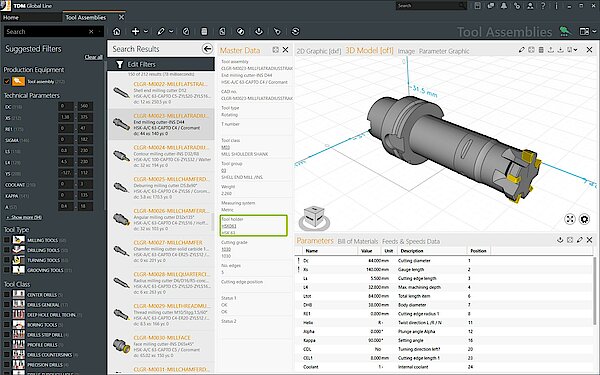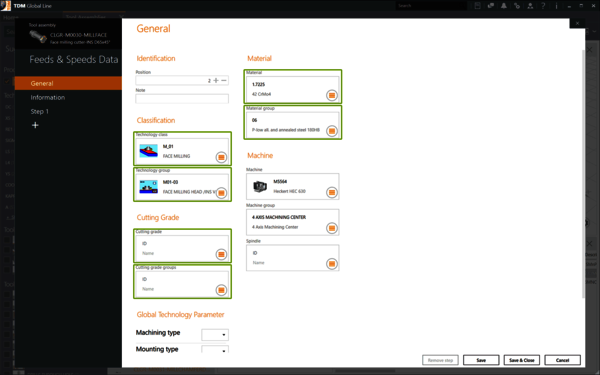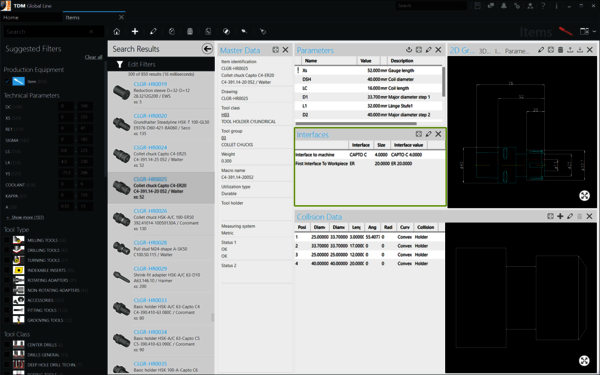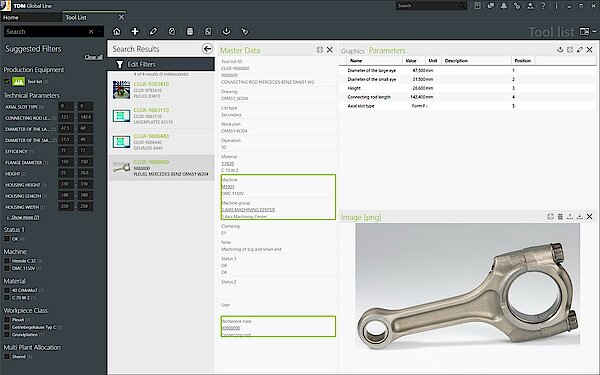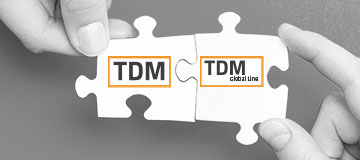The advantages of Tool Lifecycle Management are obvious: Throughout all departments, every employee has access to the tool data. In order for this process to work smoothly, it needs a center in which all information converges: The TDM Base Module and an efficient data base. Together they form the basis for tool management with TDM and enable economical and transparent data organization in all company divisions.
Every department has a different demand for tool data: For NC programming, it is the data of tool assemblies, in the crib, the order information that includes tool items. In turn, tool assembly requires tool lists, tool assembly information and workpiece setting sheets. The TDM Base Module depicts this basic structure of machining production on three functional levels. For every area represented on the software side, extensive data and documents about the tool can be filed. This also includes feeds & speeds, which define conditions of use specific to materials and cutting grades and record collision parameters and presetting data for tool assemblies. Linking tool items, tool assemblies and tool lists is also of central importance: The user can always see which items are built where and where they are on the tool lists. The TDM Base Module also provides important information for the tool crib, including the location of tool items at workspaces, the management of parts in need of repair as well as the minimum stock level.
The TDM Base Module meets all the requirements of modern, digital production, whether it be tool selection via graphic class or the features of technology and machining procedures, automatic tool assembly with plausibility check, the integrated CAD kernel for displaying 2D and 3D graphics, the automatically generated parts, tool and production lists, the automatically generated discrepancy lists or the tool catalogs of renowned manufacturers that can be integrated: A solid basis for the Tool Lifecycle Management of the future.
Feeds & Speeds
A total of 28 technology classes and a large number of technology groups describe and specify the machining procedures turning, milling and drilling in detail.
Materials
The appropriate materials are already assigned to every material in TDM. This forms a basis for the user that can be expanded however he likes and with his own know how. This assignment is essential for achieving machining results.
Cutting grades
TDM contains 81 predefined cutting grades that are described with the cutting grade type, the coating and the tool manufacturer. The cutting grade groups specify the cutting grades in greater detail.
Machines
The machines available on a shopfloor can be described in TDM with respect to their technical characteristics. This is important for testing the compatibility of tools with machine adapters and serves as the basis for the interfaces to external software systems.
Workpieces
The affiliation of a tool list to a workpiece makes it possible for the user to access existing tool sets when a new NC program is created. Dividing the workpieces into classes of the same or similar machining the spectrum of possible workpieces can be restricted when a search function is performed. Examples of tool classes are crank shafts, gearbox housings and engine blocks.
